1902-1988
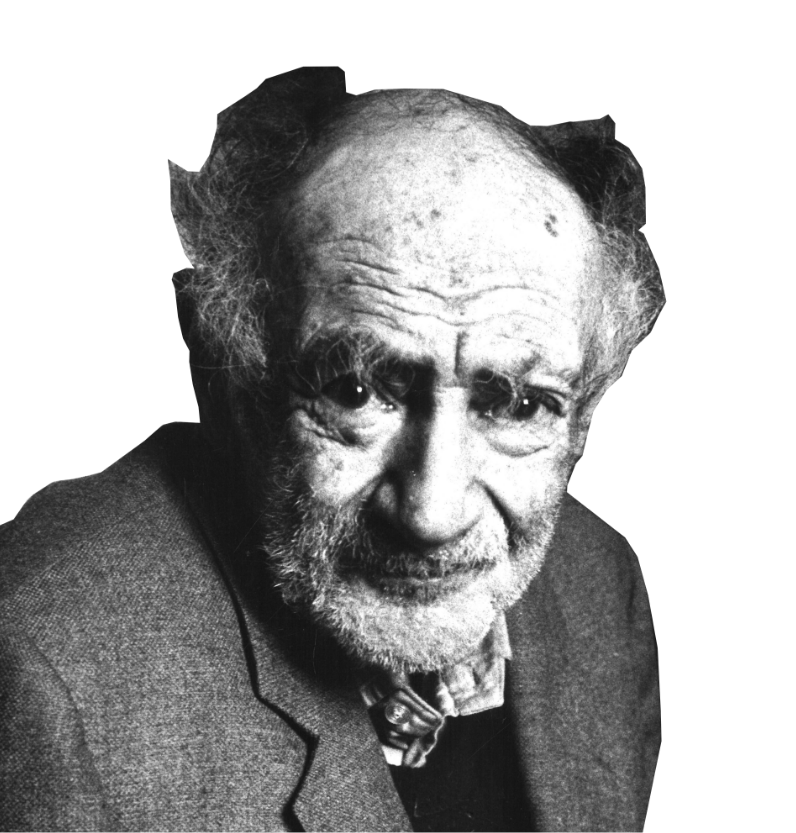
“He was a real human being (a Mensch)” who “stands uniquely apart—a loner—yet extremely sociable.”
-Klaus Märtens, Rudi Lesser 1902–1988. Graphik aus sieben Jahrzehnten (Exhibition catalogue). Berlin: Galerie Taube, 2012
Escaping Germany but Longing for Home
Shortly after Hitler came to power in 1933, Nazi Party shock-troops searched and laid waste to Lesser’s studio while he was not there. He fled the country, traveled through Europe, then settled and married in Denmark, and spent time in Paris. In 1940 the Nazis occupied both Denmark and France, and then in the autumn of 1943, they announced plans to deport all the indigenous and refugee Jews from Denmark. Lesser and his four-year-old son Kurt were among the 7,000 Jews rescued by Danish volunteers who rowed them in small boats across the water to neutral Sweden. They returned to Copenhagen at the end of the war and in 1946 he and Kurt were able to go to New York. His mother was already there, as was his brother, Kurt, who had found his way to America in 1926.
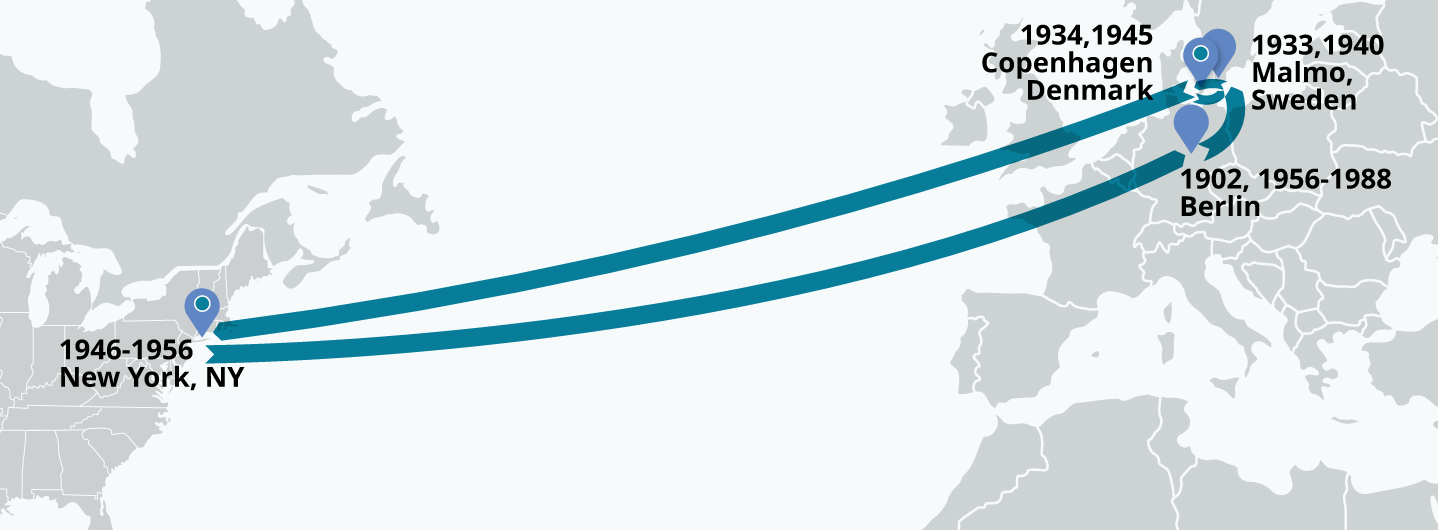
Key Facts
Etchings and lithographs became Lesser’s primary media.
He survived the persecution by the Nazis in Denmark and Sweden.
In 1946, he joined his mother and brother in New York, but was never happy there.
In 1956, he returned to Berlin, where he lived the rest of his life.
Did you Know?
At least 61 Jewish refugees in the United States found teaching positions at Historically Black Colleges. They played an important role in breaking down racial barriers in the colleges and communities where the colleges were located.
In 1948-49, Lesser was among more than 10 Jewish refugee faculty members at Howard University, and the school’s German club had 40+ students.
Early Years
Born into an assimilated Jewish family in Berlin in 1902, Rudi Lesser’s father died during his first year of life. To his mother, good education, love of music, literature and the arts were most important. He received early art training from his aunt, Alice Reichenberger, and most importantly in 1927 with Hans Meid. Lesser received high praise from teachers, critics, and established artists such as Käthe Kollwitz and George Grosz.
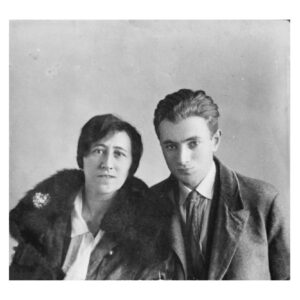
Rudi Lesser and his mother, 1919
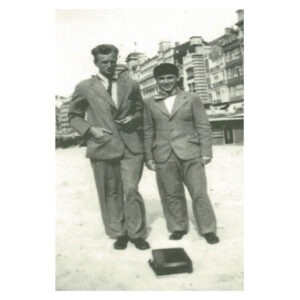
Rudi Lesser and Felix Nussbaum, 1936
Untitled (Ring Fight), 1925/26
Drypoint etching, 7 x 7 ¾ in. (17.8 x 19.6 cm). Lindenau-Museum Altenburg
© Volkmar Reichmann
Career Beginnings
Lithographs, and especially etchings, were Lesser’s primary media. In works from the 1920s and early 1930s he often drew fairly straightforward and portrait-like figures as well as interesting and unusual action images and scenes associated with particular historical or even religious events.
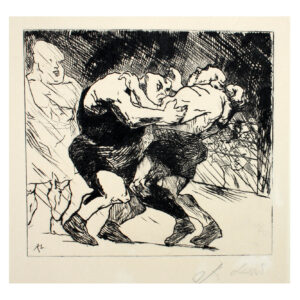
Untitled (Ring Fight), 1925/26
© Volkmar Reichmann
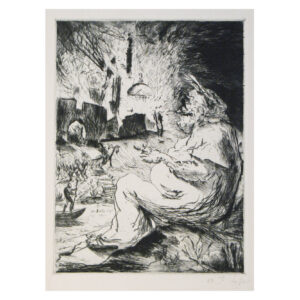
Untitled (Nero Before Burning Rome), 1923
© Volkmar Reichmann
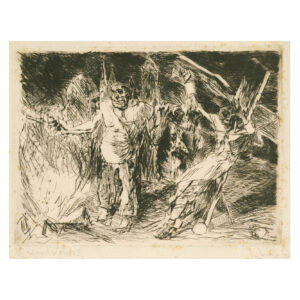
Untitled (Crucifixion Scene), 1922
© Volkmar Reichmann
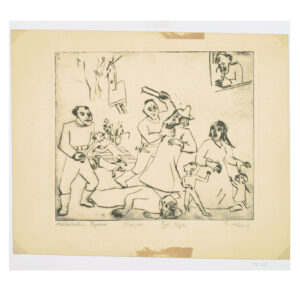
Pogrom in the Middle Ages, 1930
© Volkmar Reichmann
The most compelling aspect of his work was his fervent opposition to injustice of any sort and his concern for the so-called ‘little people’. This concern led him to join the Association of Revolutionary Visual Artists of Germany (Assoziation Revolutionärer Bildender Künstler Deutschlands) in 1928.
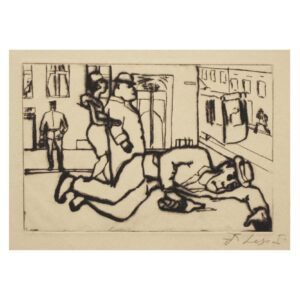
Untitled (Drunk Lying on the Street), 1928
© Volkmar Reichmann
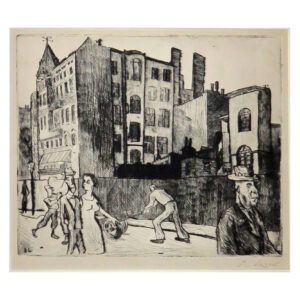
Berlin, Street in (Berlin-) Wedding, 1928
That same year, the most prominent public print collections in Germany, the Kupferstichkabinett Berlin and Dresden bought Lesser’s lithographs for their important collections and in 1931 he exhibited at the Gurlitt Gallery.
Flight Through Europe
In 1933, Nazis destroyed Lesser’s art studio, instigating his exile from his native land. After travelling through Belgium, France, Holland and England, he arrived in Denmark, where he met and married his first wife in 1937 and became connected with the artist colony Odsherred. His wife’s death in 1940 left Lesser alone with their two-year-old son Kurt and prompted his almost total artistic silence from 1940 until 1944.
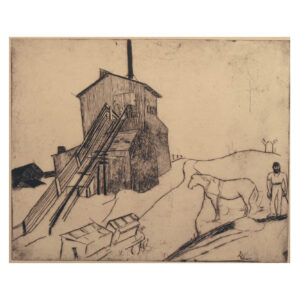
From Denmark (Worker in the Gravel Pit), 1933
© Volkmar Reichmann
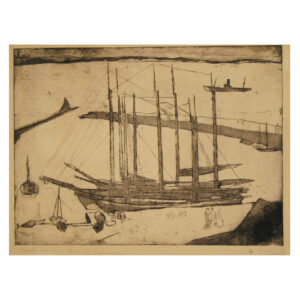
Boats on Ven Island (Boote auf Ven), 1936
© Volkmar Reichmann
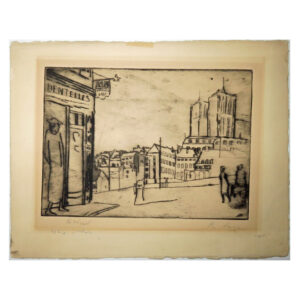
Brussel, 1935
In the autumn of 1943, the occupying German forces announced plans to deport all indigenous and refugee Jews from Denmark. This prompted the now renowned, heroic rescue of over 7,000 Jews by hundreds of Danes who rowed them in small boats across the water to neutral Sweden, while avoiding both the Germans and the Swedish Coast Guard since it was technically illegal for refugees to enter the country. After several failed efforts and dramatic moments Lesser and his now four-year-old son finally made it to Sweden.
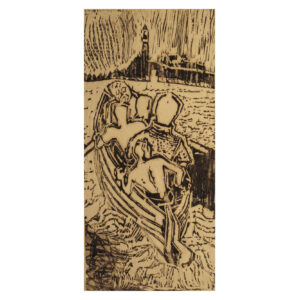
Untitled (Night Crossing), 1955
© Volkmar Reichmann
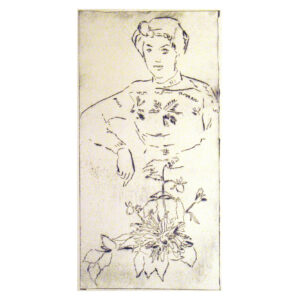
Grete (the artist’s daughter), 1958
© Volkmar Reichmann
Joining Mother and Brother in New York
At war’s end, Lesser returned to Copenhagen, but soon after, in 1946, he and Kurt joined his mother and brother in New York. He brought with him a letter of introduction from George Grosz to the well-known photographer and gallerist, Lotte Jacobi.
He made Lovers with Bird shortly after he arrived. It can be seen as an attempt to find his way into the abstract expressionist movement at the center of the New York art world. Ultimately he never completed that transition.
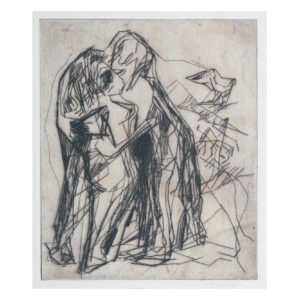
Lovers with Bird, 1946
© Volkmar Reichmann
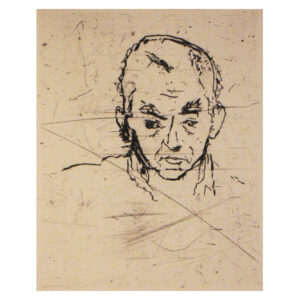
Self-Portrait, 1987
© Volkmar Reichmann

Grandmother Bianca Lesser, 1930
© Volkmar Reichmann
In 1948, Lesser became the first professor appointed to the faculty of the newly formed printmaking department at Howard University in Washington, DC, one of the foremost Historically Black Colleges and Universities. He was very well suited for his affiliation with Howard, given his strong sympathies for the Black community. He had joined the NAACP soon after arriving in the United States.
After a semester or two, Lesser was back in New York. Even though he exhibited his work in several outstanding museums and galleries, and is represented in numerous important museum collections, it was a sad and lonely time for the artist.
Return to Berlin
In 1956, Lesser decided to return to Berlin, which he still considered the capital of the world. The Germany he returned to was very different from the country he had fled more than twenty years earlier. The country was now split into East and West, and five years later a wall would go up between East Berlin and West Berlin, and the ruinous evidence of war still scarred the landscape.
Eleven years after the war had ended much of West Germany had been rebuilt, but Lesser sought out sites of rubble and ruin to document the fractured urban landscape and symbolize what Hitler had done to the country.
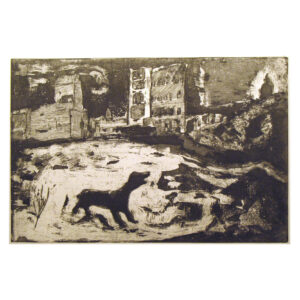
Untitled (Dog in the Ruined Quarter), 1956
© Volkmar Reichmann
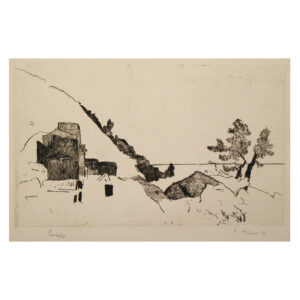
Portinho, 1986
© Volkmar Reichmann
Lesser produced many diverse landscapes and portraits, recording insightful impressions from his travels, rediscovering his homeland and the larger continent of which it is part. While he did not have great commercial success or widespread recognition at any time in those last thirty years in Germany, neither was he entirely obscure.

Rudi Lesser and Printer Handke,1963
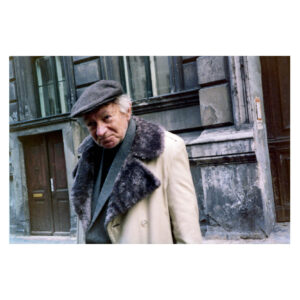
Rudi Lesser, Solmstrasse, 1975
© Volkmar Reichmann
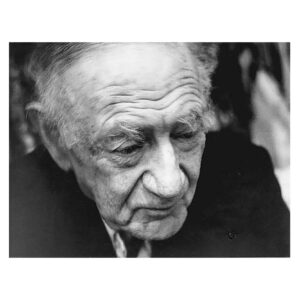
Rudi Lesser, c. 1986
Untitled (Drunk Lying on the Street), 1928
Drypoint etching, 4½ x 7 in. (11.9 x 17.8 cm). Private collection Berlin
© Volkmar Reichmann
An Independent Artistic Personality
Lesser always remained a solitary, independent artistic personality, very much connected to, reflecting on, and concerned about the world around him, but disconnected from particular modernist artistic movements.
He demonstrated a gift for portraiture—a reflection of the intensity of his empathy and thus his ability to uncover the soul of his subject.
His last works demonstrate the same power of line and space that defined his work fifty years earlier. If there is a change, it is that the political element has been largely abandoned in favor of stylized landscapes that are, simply, landscapes.
Watch the Conversations
Rudi Lesser (1902–1988):
The Forgotten and Rediscovered Artist
Featuring Lillie Johnson Edwards, PhD and Ori Z. Soltes, PhD
October 20, 2021
Additional Resources
Story of Black Colleges and Universities, PBS trailer
Producer: CBS News
Date: 2018
From Swastika to Jim Crow: An important chapter in Black-Jewish relations
Producer: American Jewish Committee
Panelists: Dr. Lillie Edwards, Steven Fischler and Joel Sucher, co-producers of the 2000 documentary From Swastika to Jim Crow
Date: 2021
From Swastika to Jim Crow Part 1 of 2
Producer/Director: Lori Cheatle
Producer: Steven Fischler, Joel Sucher, Martin D. Toub
Date: 2001
